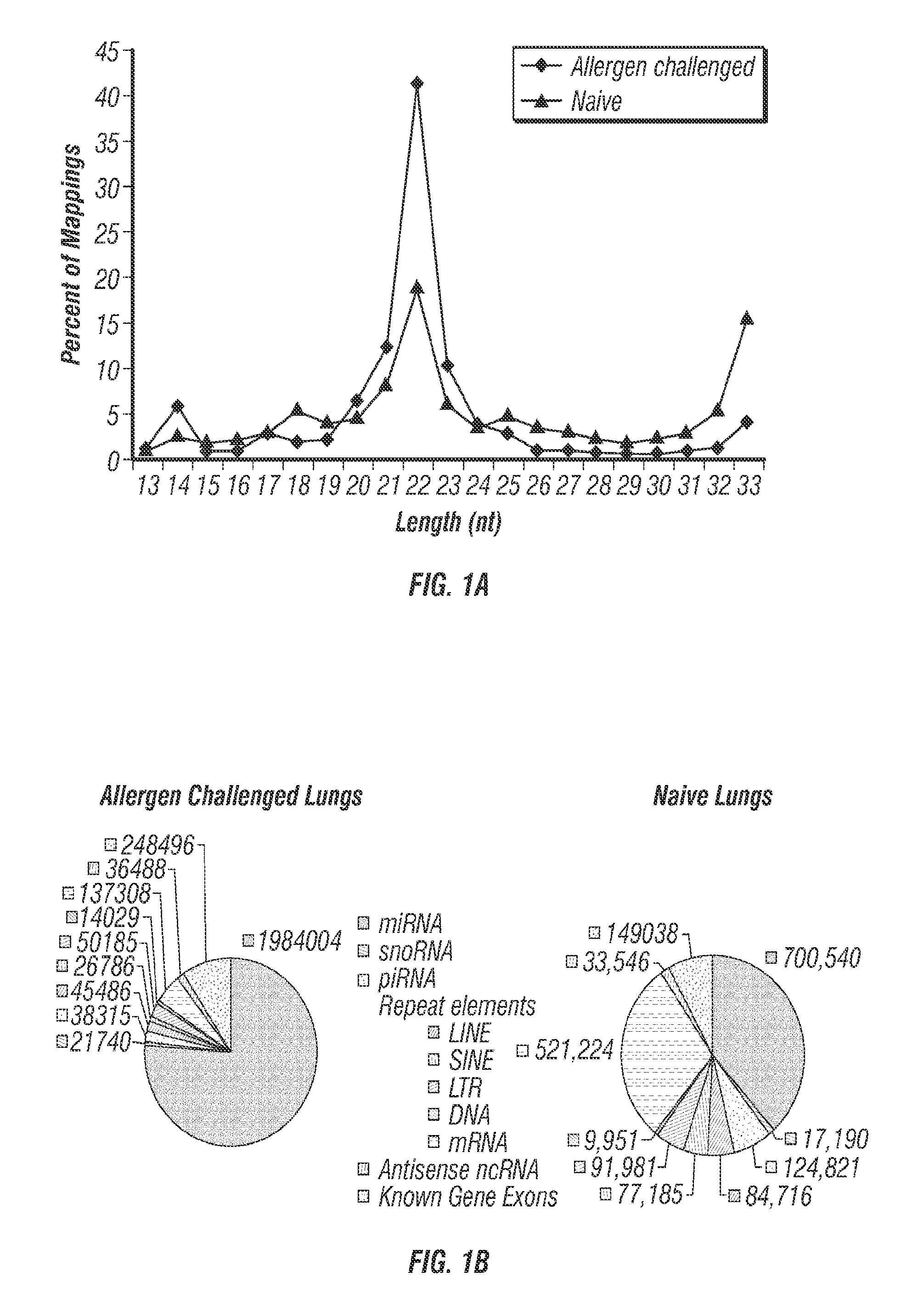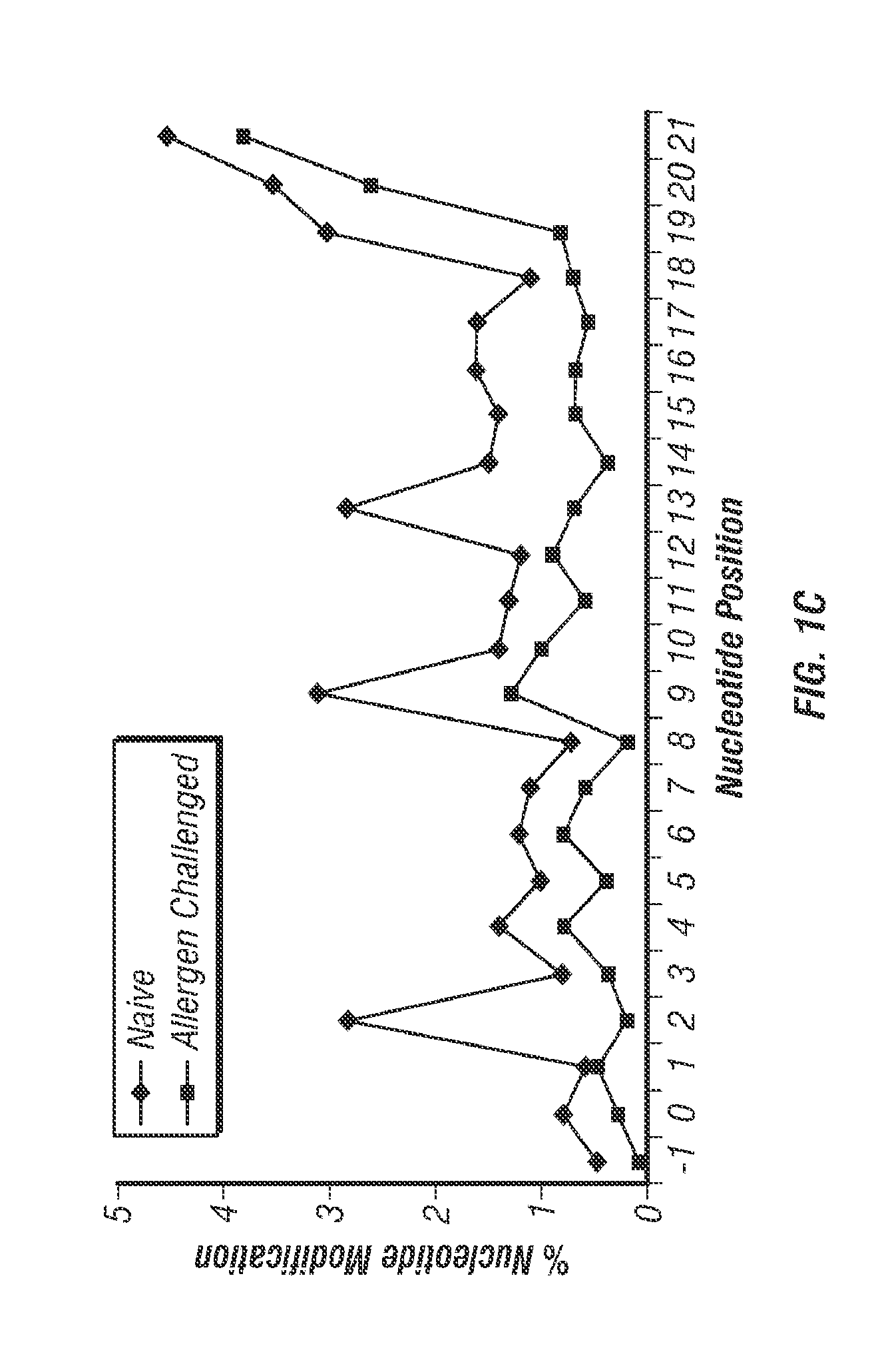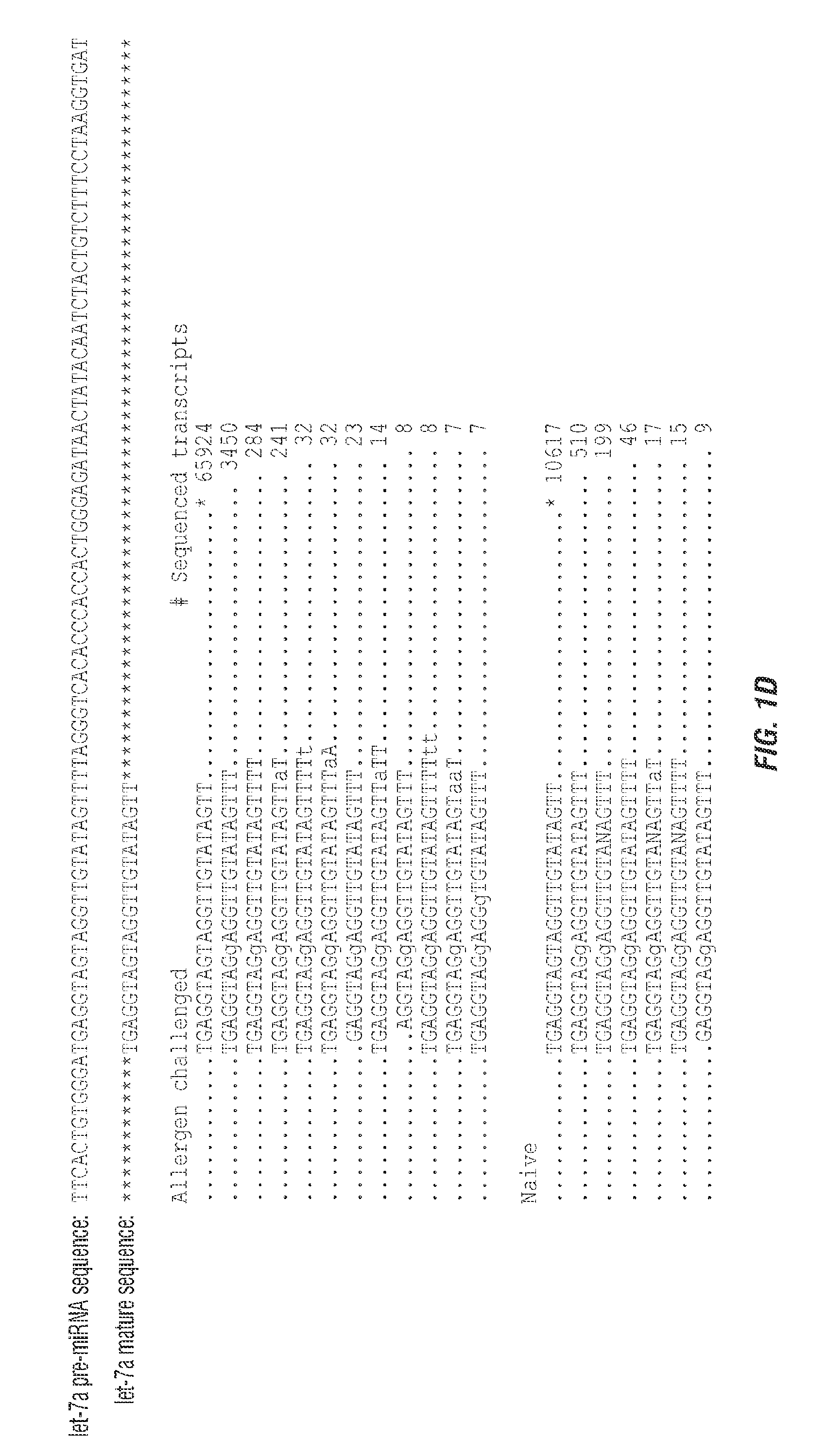Mirna expression in allergic disease
a technology of mirna and allergic disease, applied in the field of molecular biology, immunology, and the diagnosis and treatment of allergic lung disease, can solve the problems of insufficient understanding of the importance of these regulatory transcripts in complex in vivo systems, inability to predict the function or in vivo effect of even a single mirna, and inability to fully understand the precise role of mirna in a variety of biological and developmental functions. it can inhibit the inflammatory and allergic lung diseas
- Summary
- Abstract
- Description
- Claims
- Application Information
AI Technical Summary
Benefits of technology
Problems solved by technology
Method used
Image
Examples
example 1
Materials and Methods
[0178]Mice and Allergen Challenge.
[0179]All experiments were performed in accordance with institutional and United States National Institutes of Health guidelines. Allergen challenge of C57BL / 6 mice was performed with an allergenic fungal proteinase and ovalbumin as previously described (Kheradmand et al., 2002).
[0180]Preparation of Short-RNA Transcripts for Illumina Sequencing.
[0181]Short RNA transcripts of <60 nucleotide length were gel purified after running 10 mg of total RNA on 15% TBE-Urea polyacrylamide gel. A synthetic 26-residue adapter RNA oligonucleotide (5′ GUU CAG AGU UCU ACA GUC CGA CGA UC 3′ (SEQ ID NO:280)) was ligated to the 5′ and of the small-RNAs. The ligated small-RNA was gel purified to remove un-ligated free adapter. A synthetic 22-residue 3′ adapter with inverted dideoxythymidine added at the 3′ end (5′ p UCG UAU GCC GUC UUC UGC UUG idT 3′ (SEQ ID NO:281)) was ligated to the 5′ ligated small-RNA and gel purified. The resultant RNA library...
example 2
Pro-Inflammatory Role for Let-7 MicroRNAs in Experimental Asthma
[0216]miRNAs Dominate the Lung Short RNAome and Several are Edited to Alter the Target Repertoire.
[0217]The lung short RNAomes of naïve and allergen challenged mice were characterized using the Genboree platform for mapping NGS data from the 10 copies of complete sequences identified each) in naïve and 328 miRNAs in allergen challenged mice (Tables 4 and 5). Let-7 family miRNAs were dominant, comprising 58% and 64% of total lung miRNAs from naïve and allergen challenged lungs, respectively (Tables 4 and 5). Among these, let-7f was most abundant in both naïve and allergen challenged lungs.
TABLE 4Distribution of sequence reads aligningwith miRNAs in Naive Lung.Naiive LungExact MatchMatch toto miRNAExact MatchmiRNA with 1-3miRNA_miRBase 14.0(+ / −4)to miRNAmismatchesmmu-let-7a316362122411584mmu-let-7b255721120826577mmu-let-7c755374915028947mmu-let-7d1083371072780mmu-let-7e27561726816mmu-let-7f837546122416859mmu-let-7g1309010...
example 3
Effects of Inhibition of Let-7 miRNA-155 In Vivo
[0240]This Example describes the effects of the inhibition of mmu-mir-155 (mouse miRNA 155) in mice; as shown below, the data indicates that miRNA-155 is required for the expression of allergic lung responses in vivo. Novel miRNAs from mouse T cells were also identified.
[0241]Materials and Methods
[0242]Mice.
[0243]Four to six-week-old female Balb / c and C57BL / 6 mice were obtained from The Jackson Laboratory (Bar Harbor, Me.). All mice were maintained at the Transgenic Mouse Facility (TMF) at Baylor College of Medicine (BCM) and treated in accordance with the institutional and federal guidelines of BCM and the National Institutes of Health (NIH), respectively.
[0244]CD4+ T Cell Isolation and In Vitro Differentiation.
[0245]Mice were anesthetized with a single intraperitoneal (IP) dose of pentobarbital sodium. Following cervical dislocation the spleens were aseptically removed and a single-cell suspension was obtained by gently pressing sple...
PUM
| Property | Measurement | Unit |
|---|---|---|
| Tm | aaaaa | aaaaa |
| temperature | aaaaa | aaaaa |
| temperature | aaaaa | aaaaa |
Abstract
Description
Claims
Application Information
 Login to View More
Login to View More - R&D
- Intellectual Property
- Life Sciences
- Materials
- Tech Scout
- Unparalleled Data Quality
- Higher Quality Content
- 60% Fewer Hallucinations
Browse by: Latest US Patents, China's latest patents, Technical Efficacy Thesaurus, Application Domain, Technology Topic, Popular Technical Reports.
© 2025 PatSnap. All rights reserved.Legal|Privacy policy|Modern Slavery Act Transparency Statement|Sitemap|About US| Contact US: help@patsnap.com



